This is Part XI of The Public Medievalist’s continuing series on Race, Racism and the Middle Ages, by Dr. Helen Young. Her book Race and Popular Fantasy Literature: Habits of Whiteness, is available from Amazon and direct from Routledge.
Go back to the beginning of the series here.
As this series has been exploring, the idea of a “white, racially pure Middle Ages” has been used for political ends by right-wing extremists throughout the twentieth and twenty-first centuries. But it is not only extremists who believe in it. There is evidence to show that many (perhaps most) people get their ideas about the Middle Ages from popular culture rather than from school or books written by scholars – and popular cultural re-imaginings of the European Middle Ages almost exclusively feature characters who are white. Even in fantasy versions of the past like Game of Thrones or the Dragon Age video game series, the idea that there were no people of colour in Europe during the Middle Ages is used to explain away a lack of diverse representation.
But where does this notion come from? Where are those images of the medieval past from in the first place? How did the idea of the Middle Ages become so entangled with the idea of a white race? To answer this we need to look back to the era when our current ideas about race and about Middle Ages developed: the eighteenth century.
Making “Race”
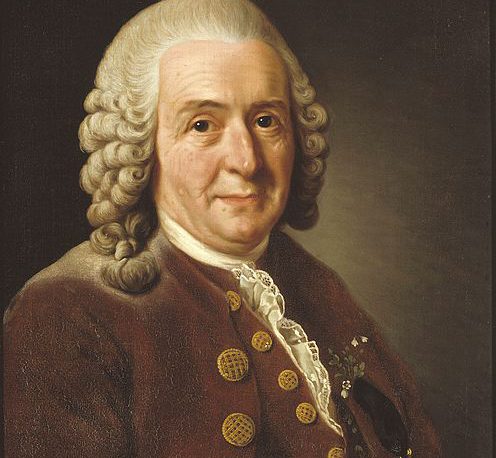
As Paul Sturtevant explored in “Is Race Real?”, the idea of “race” is a cultural invention which developed over time and which therefore has a history. Most contemporary histories of the concept of race, and of specific racial identities like “whiteness”, tend to focus on the intellectual circles and key thinkers where important developments originated.
The idea of a “white” race emerged during the Enlightenment in the eighteenth century. Carl Linnaeus first categorised humans into races in 1738 in his highly influential Systema Naturae, which sought to classify the entire natural world. By the tenth edition in 1758, he had expanded his original brief descriptions to include physical and sociological descriptions. Homo europaeus, as he called Europeans, were white-skinned, with societies organised by the rule of law. In the second half of the eighteenth-century his ideas were well-known, and arguments raged in the public sphere about the causes of the differences—both physical and cultural—across the spectrum of humanity.
It is probably not surprising that all the European thinkers who took part in these debates always placed themselves at the pinnacle of racial hierarchies.
Making “Race” Popular
Despite being disproven by at least sixty years of modern science, the power of race and racism have not been broken. Important social theorists of race, Michael Omi and Howard Winant, argue that intellectual and conceptual debates about race often have “dramatic” consequences that impact whole societies. It is therefore vital that we understand how the ideas of race and white superiority became wide-spread among everyday people.
Oliver Goldsmith, who is probably now best remembered as the author of the popular novel The Vicar of Wakefield, was just one of the figures who contributed to making whiteness popular in Britain and its former colonies with his A History of Earth and Animated Nature (1774). His work was a translation and adaptation of Linnaeus and other early biologists.
Goldsmith was not as convinced that races were as fundamentally different as many of his contemporaries. But he was still very clear that Europeans were supreme among humanity. He wrote:
They [those variations] are actual marks of degeneracy in the human form; and we may consider the European figure and colour as standards to which to refer all other varieties.
He also wrote that whiteness was the best skin tone in terms of beauty and its ability to show emotion, and that Europeans resembled God more closely than other people.

Although Goldsmith was mostly translating others’ work and did not add much to others’ ideas about race, he is an important figure because he made those ideas accessible to a wide audience. A History of Earth and Animated Nature was one of many publications that helped popularise biological writings of and the idea of race. It was reprinted in 1790, and at least six times in the nineteenth century in the UK and in America. In one American edition the chapter on race was moved to the beginning of the volume. The publisher likely thought it was particularly important.
Hannah Arendt has argued that race, in English thought, “was born of the desire to extend the benefits of noble standards to all classes.” Democracy, liberty and equality were important political ideas in the eighteenth century as emblematized in the French and American Revolutions. Race allowed Europeans—and European settlers in America and elsewhere—to create a new system of hierarchies and see themselves as collectively superior.
Once “race” was popularised and adopted by western society, white people had a whole system of science justifying the idea that they were racially superior. This was a crucial moment as a powerful ideological and political tool was built into new national economies and global trade through systems like slavery, and white dispossession of indigenous peoples in settler colonies, and the plunder of resources from around the world by European powers.
Making “Race” Medieval
But what does all this have to do with the Middle Ages? The eighteenth-century idea that humanity was divided into separate racial groups with distinct physical, cultural and social features inherited from—and shared with—their ancestors meant that history had to be reassessed. European nations needed to create new stories about their national origins that worked within a racial framework.
Classical Greece and Rome had been viewed as the height of human achievement and civilisation. Powerful nations like England and France which could not trace their racial descent back to those places needed a new source for identity. They found it in the Middle Ages, among the very peoples who had, according to the thought of the day, destroyed Rome. We have never completely let go of the idea that the Middle Ages were barbaric, but since the 1760s western nations found things to take pride (often undeservedly) in the medieval period as well. Racial origins are among them.
There were hierarchies within the hierarchy that placed whites at the global peak of humanity. European nations vied with each other to expand their empires around the world, and argued over racial divisions within the broader category of homo europaeus as they looked to racial origins for justifications of the success and failure of their nations and their rivals’. It was in the debates about which nations shared a common ancestry and whose ancestors were superior that much of the intellectual and cultural work that went into creating modern concepts of whiteness was done.
Making “Race” Linguistic
Studies of the history of languages (philology) caused people who had not thought of themselves as being linked to other nations to begin to see kinships across national boundaries. Despite being inherently cultural, language thus became a marker of racial connection.
One of the results of the interest language as a marker of racial connection was a growing interest in the Middle Ages. Medieval manuscripts were often the oldest written records of a language and could serve as evidence in those debates. The medieval period was also the source of the earliest historical writings about, for example, English people by English people.
Most of the white-washing of the Middle Ages was done in those debates which focused within Europe rather than in writings about races on a global scale, at least it the early stages. An example is in the publications of Goldsmith’s close friend Thomas Percy. Percy believed very strongly that the English, the Scandinavians, and the Germans were descended from the same “Gothic” race, while the Irish, Scots, and French (among others) were descended from a “Celtic” race.
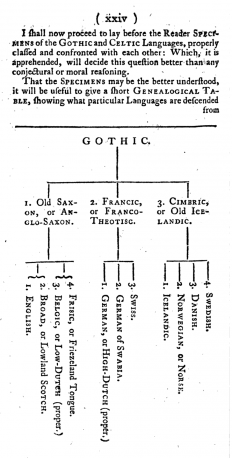
Although he is not much remembered now, his studies of the Middle Ages were very widely read and influential at the time. The first Five Pieces of Runic Verse Translated from the Islandic Language (1763) made strong claims about the close relationships of English, Scandinavian and Germany based mostly on language.
His best-known publication was the Reliques of Ancient English Poetry (1765) a three-volume collection of (purportedly) medieval ballads. Most were early modern not medieval as he claimed, and many were very heavily re-written by Percy to make them more appealing to his readers. Each volume contained a framing essay which presented its contents as the cultural heritage of the English race. Some of his theories were challenged but the volume was so popular that he was able to argue back in second edition in 1767. In that revised version he aimed to show that the Saxons, Vikings, and Normans were all ‘Gothic’ peoples, which meant that the modern English could think of themselves as racially pure.
Percy’s final medievalist publication was Northern Antiquities (1770) a translation of the work of Paul-Henri Mallet who had conflated the Celts and Goths (also called Teutons or Germanic people) in widely-read history of Denmark. Percy began his translation in the early 1760s and from that time was committed to showing the Goths and Celts were different races. In a letter in 1764 he wrote that Mallet’s was “a mistake which I shall endeavour to rectify in my translation.” When his translation was eventually published he included many notes and an entire Preface dedicated to showing that they were racially different, drawing on historical, linguistic, and scientific discourses to support his claim.
All three of his medievalist publications aimed to make contemporary readers see themselves as connected to the Middle Ages because of racial descent. The examples of medieval poetry they contained gave readers something tangible to connect the idea of race and identity to.
Making “Race” Popular Cultural
Reliques was so popular that four editions were produced in Percy’s lifetime. The massively influential author Sir Walter Scott (of Ivanhoe and Waverly fame) called them “beloved volumes.” Under its influence the vastly popular English Romantic poets William Wordsworth and Samuel Taylor Coleridge rejected the elaborate forms and style of the eighteenth century for a simpler, ostensibly medieval, aesthetic. Key figures of the German Romantic movement were inspired by his ideas including Johann Gottfried von Herder, Johann Wolfgang von Goethe, and the brothers Grimm—whose fairy tale collection was ultimately modelled on Percy’s ballad anthology.
The Reliques was re-printed throughout the nineteenth century and into the twentieth. They were printed in cheap mass-market editions, in luxury versions, and even in editions aimed at children. A nineteenth-century edition praised Percy for having “pointed out the essential difference between the Celtic and Teutonic races.”
Percy invested a decades’ worth of work in trying to show that those races were different, pointing to the Middle Ages as his the ultimate source of evidence. Percy engaged in what Omi and Winant call “making up people” and his publications presented (pseudo)medieval material as objects of national and “racial” pride for his English readers. In many ways, they reshaped English identity around a framework of race and medievalism. Other writers and antiquarians across Europe followed his model, either directly inspired by reading his public

ations, or indirectly through the ideas of others. And thus, the Middle Ages were tied to the European concept of white racial identity.
But Percy and Goldsmith are just two of the hundreds of thinkers and authors who contributed to connecting whiteness to the Middle Ages.
The 1760s marked the beginning of an explosion of medievalism across Europe. Architecture, the arts, and literature took a medievalist turn. These medievalisms were often driven by, or at least participated in, ethno-nationalist ways of thinking.
Once the idea of race was widely accepted, European Middle Ages needed to be understood as ‘whites only’ territory for those ‘races’ to have the ‘pure’ origin they needed. In fictional versions of the Middle Ages like Sir Walter Scott’s novels, people of colour only appear rarely. They are enemies and potential invaders in crusader tales, but are not part of the medieval Christian white societies of Europe.
The race-based nationalism of Scott and his literary descendants (J. R. R. Tolkien, for example, and many others) both relied on and helped create medieval Europe as the crucible of white European nations. As I argue in my recent book Race and Popular Fantasy Literature: Habits of Whiteness, the genre conventions created in the early years of mass popular culture have shaped western popular- cultural versions of the Middle Ages ever since.
Making “Race” Academic
It was not just fictional versions of the Middle Ages that worked to make them ‘whites only’ spaces in the modern imagination. Not only have academic disciplines been twisted to racial ends (as James M. Harland wrote earlier in this series); in the case of language studies, academic disciplines were founded on ideas about race.
In the eighteenth century there were no English departments in universities. Amateur antiquarianism like Percy’s became an academic discipline in the nineteenth century. There is a racial dimension to the way they were structured, and how many remain structured today. When I began graduate studies in an English department it taught Old Norse and Old English (Germanic languages) alongside Middle English and literature, and of course modern literature. Old French was not taught—despite the profound influence of French on modern English which resulted from the Norman Conquest. Medieval Spanish, or Middle Arabic were not. Many departments are organized this way in the English-speaking world.
This reaches back to the philological theories like Percy’s which presented Old Norse as the cultural property of English speakers because of an imaginary shared Gothic racial ancestry. French and Spanish, from another family of languages (Romance), was not. Arabic certainly was not. The idea that English literature is separate to the literature of other languages as as field of study goes back to the race-based ideas that underpinned philology.
The Celts, Goths, and other peoples of Europe could collectively be thought of (by those invested in racial paradigms) as homo europaeus because they had a shared, unique Middle Ages. In order for their race to be distinct, their history needed to be made distinct. So, those features of the medieval period that we think of as distinctive and definitive (knights, castles, feudalism, etc.) were not thought to be found in the histories of cultures outside Europe. Any similar features that were found in other cultures were actively ignored or dismissed. This meant that for centuries ‘medieval’ was made to mean ‘white’.
Undoing the Damage
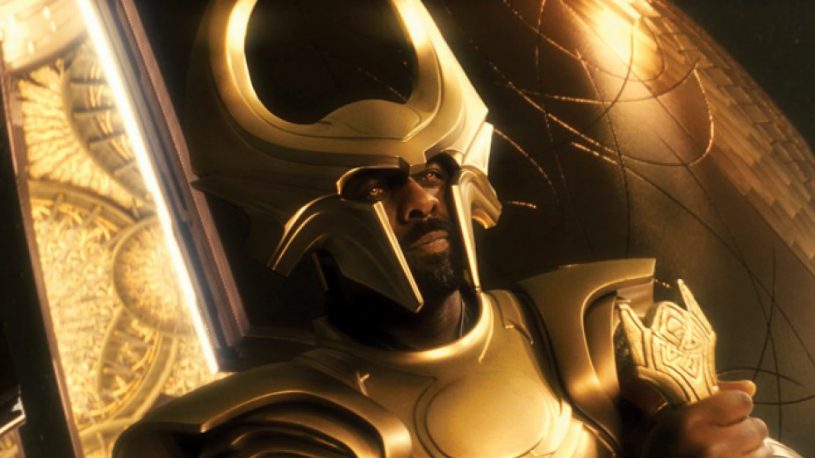
The white-washing of the Middle Ages is now being challenged in popular culture and by scholars. Actors of colour are now sometimes cast in medievalist roles such as Angle Coulby as Gwen (Guinevere) in the TV show Merlin, and Idria Elba as the Norse God Heimdall in Marvel’s Thor movies. The “People of Colour in European Art History” tumblr seeks to break down the idea that ‘historically accurate’ means ‘whites only’ in representations of the Middle Ages. Scholars are exploring the Global Middle Ages in research and teaching. The legacies of linguistic ideas of race are losing power because of new approaches to multilingualism and national borders.
We have to continue this work, and demand that scholars and pop-culture creators offer us new visions of the Middle Ages that are not mired in eighteenth- and nineteenth-century racist thought. The Middle Ages were made white in the eighteenth century, but they do not have to stay that way.
The Public Medievalist does not pay to promote these articles, so we would love it if you shared this with your history-loving friends! Click to share with your friends on Facebook, or on Twitter.
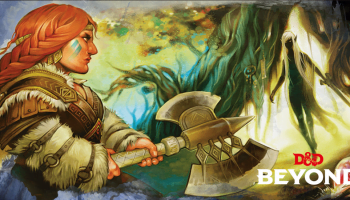
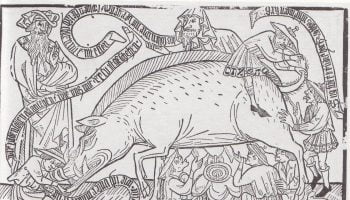



This is the dark side of history